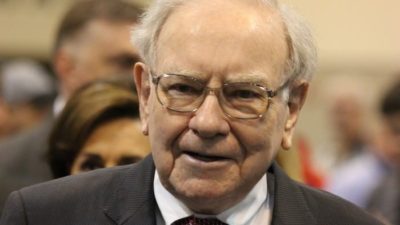I rarely bother to check my annualised returns using a portfolio management system I subscribe to called Sharesight, although I was pleasantly surprised to see my total returns for the ASX (including dividends) are running well north of 30% p.a. after a decent earnings season and a significant weight of cash invested over the last 18 months.
Remarkably, returns from investments in the U.S. tech bull market are running far higher than 35% p.a. due to a measurement period of just over two years (which can artificially inflate or deflate returns) and a more concentrated portfolio.
Having a concentrated share portfolio of 1-10 shares is one way to achieve outsized returns, but this strategy is not recommended and a lack of diversification is the most basic investment error going.
Ideally a portfolio should contain 13-30 stocks in my opinion and in terms of balance one of the easiest rules used by professional investment managers in Europe as part of the UCITS regulations is the 5/10/40 rule, with global ETFs commonly obeying this rule as well.
The rule means no more than 10% of your portfolio's assets should be invested in any single share, with a limit of no more than 40% of your portfolio invested in securities that represent more than 5% of your portfolio's value.
For example you could have 4 holdings up to 10% and 5 holdings up to 8% to make up 9 holdings across 80% of your portfolio. The remaining 20% is made up of around another five stocks at say 4% each. That would give you 13 stocks and anything more concentrated is probably insufficiently diversified.
So now you know the easy part on portfolio balance, it's time to consider how best you can aim to return 30% p.a. on the ASX, after all it's better to aim too high and fail than too low and succeed.
Different professional investors have different methods for success, but below are some rules I follow that could help you get close.
- Avoid non-investment grade companies – this is the most important rule of all as at least 90% of the around 2,300 companies currently listed on the ASX are non-investment grade. Signs that a company is non-investment grade include; no profits, no sales, limited track record, too much debt, weak balance sheet (especially for smaller companies), limited confidence in management, no management alignment, no competitive advantage, no pricing power, missed forecasts, unclear reporting / accounting structures, and never buy price takers (miners, etc), or companies with no growth.
- Sometimes you can make an exception to the rule around profitability, for example the only two unprofitable companies I own are Xero Limited (ASX: XRO) and Nearmap Ltd (ASX: NEA), but I wouldn't recommend having more than 10% of your portfolio in unprofitable companies.
- The sin qua non is to buy growing companies. Preferably growing at double-digit rates, with profit growing faster than revenue via margin expansion. Over either the short or medium term share prices will follow profits higher or lower as shares are valued on estimated future cash flows adjusted for the risk that these cash flows will not materialise. If a business cannot grow profits it won't grow its market value. Never buy shares for income if your aim is out-sized returns.
- Only ever look for growth in investment grade companies at a reasonable price. A reasonable share price (or discount) is difficult to quantify, but if you dollar cost average into the right companies your returns should even out. Remember, returns a function of price paid and paying too much for a fast-growing company such as AfterPay Touch Group Ltd (ASX: APT) or WiseTech Global Ltd (ASX: WTC) could sink your overall returns for a long time.
- Motley Fool co-founder David Gardner often tells investors to buy the winners with strong past price appreciation. And not for nothing either. Winners keep on winning and thinking "you missed the boat" on an investment could permanently exclude you from the best growth stocks like CSL Limited (ASX: CSL) or potentially the aforementioned AfterPay.
- Admit your mistakes, this is tough, but easier if your returns are generally strong. I blundered in holding onto debt-ridden Vocus Group Ltd (ASX: VOC) and still retain around 10% of my original stake that I should probably sell. Others in my portfolio I have heavily sold down include Ramsay Health Care Ltd (ASX: RHC) and BWX Ltd (ASX: BWX), which are positions I am looking to exit entirely. Generally though it is better to exit losing stocks quickly as soon as they have been identified as mistakes.
- Hold onto your winners as the big compound returns are made this way. Never listen to those who advise it "could be time to take profits" on strongly appreciating stocks – this is an amateur investing mistake. Manage risk if a single position is ballooning to say 15%-20% of your portfolio, but always let your winners run indefinitely. This principle coexists with a long-term investing philosophy that lets time and profit growth do the heavy lifting for your returns.
- Take the time to learn a market and if you're comfortable with your experience then take some risk in the high-growth small-cap space. Risk and returns are correlated as such an unwillingness to take risk in pursuit of superior returns will exclude you from there potential.
I doubt I'll be able to sustain returns above 30% p.a. as the weight of money invested will even out and a sustained market fall or serious bear market is only ever a trading day or President Trump tweet away.
However, sticking to these principles gives anyone a good shot at getting ahead in the share market.
Don't be afraid to do it yourself, you don't need significant experience at a top tier buy side fund manager or professional investment qualifications to learn the basics of successful share market investing.
And to get you going you could consider 3 of The Motley Fool's favourite ideas for big returns….








